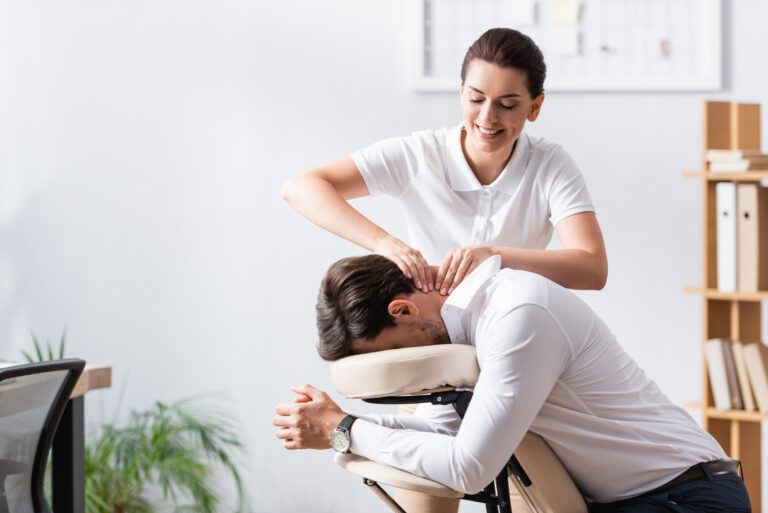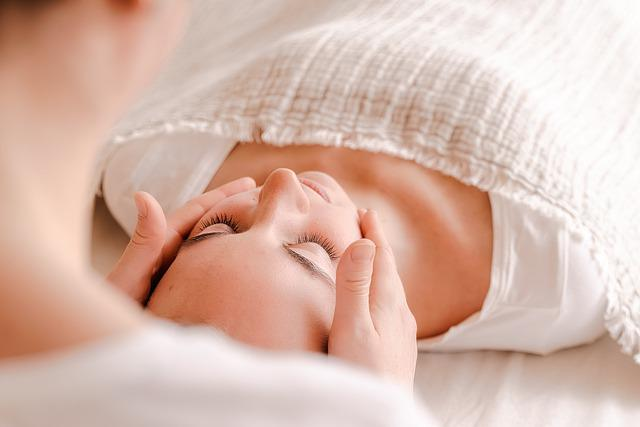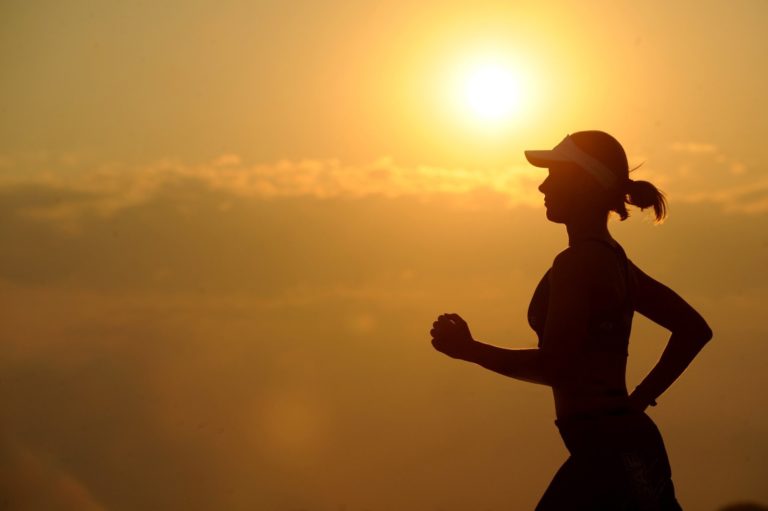Known throughout the holistic health world as a valuable addition to alternative medicine practices, massage has extended far outside of the holistic health bubble, entering into the world of the mainstream.
From stressed-out business owners to busy mothers, there truly is no one type of individual anymore that could go out and seek regular massages. Some companies even offer complimentary massages to their employees in the office or off-site. The reason for this? As the MayoClinic reports, “studies of the benefits of massage demonstrate that it is an effective treatment for reducing stress, pain and muscle tension.”
Other, less conclusive studies report the potential for massage in the reduction of anxiety, fibromyalgia, sports injuries, digestive disorders, stress due to insomnia, and more.
Massage is not only pursued actively because of its science-backed health benefits, for some individuals it also satisfies the desire or craving for closeness, connection, and physical touch. Arguably, all humans need care and comfort and for those who aren’t getting these necessities filled on a regular basis, receiving a massage can potentially help.
How Exactly Can Massage Be Defined?
For those who are familiar with massage, you may already be aware of how to describe this practice. By definition, massage is a combination of movements involving rubbing and pressing muscles, skin, ligaments, and skin. There are numerous styles and forms of massage, along with intensities. The style of massage one might opt for is typically a highly personal decision or one recommended by the massage specialist.
Pressure strength of a massage typically ranges somewhere between the realms of light and deep. Light feels more like gentle stroking and it stimulates the location being massaged, while deep is a heavy pressure that typically digs into the muscles, ligaments, and more.
Some common styles of massage that are offered globally include deep tissue massage, craniosacral massage, Thai massage, Swedish massage, and sports massage. In reality, however, there is an endless number of combinations and options, so it’s best to go about finding a massage therapist that you feel comfortable with and then asking them which styles they recommend or specialize in.
Not everyone, however, should pursue getting a massage. Certain medical conditions are not considered safe to have when receiving a massage and your therapist will likely ask you questions prior to your appointment to make sure you are a good candidate. Individuals with the following conditions should avoid getting massages or consult their medical doctor beforehand:
- Severe osteoporosis or thrombocytopenia
- Wounds or burns that are still healing
- Fractures or bone breaks
- Those taking blood-thinning medications or those that have bleeding disorders
- Deep vein thrombosis (DVT)
The most important thing during a massage is to be in clear communication with your massage therapist. Massages, although at times uncomfortable, should not be extremely painful. If you, at any point, experience unbearable pain, immediately inform your massage therapist so that they can adjust their technique based off of your needs, comforts, and requests.
Massage and Stress Reduction
Science shows that massage can reduce stress levels, in addition to its other attributes. Stress is an especially important focus in this article because it is an extremely debilitating and potentially dangerous challenge that is experienced by a massive percentage of the world at various ranges of severity.
Stress impacts overall emotional well-being, and not only does it play a role in the mind, but it can also produce physical complications and deteriorate the health and wellbeing of the physical body. For this reason, and many others, massage can serve as a potentially very useful tool.
Understanding Essential Oils
During a massage, certain products are typically utilized in order to make the experience more pleasant and healing. One of the commonly used ingredients is oil. Often, coconut oil or another light oil such as sweet almond oil or grapeseed oil is applied by a massage therapist in order to make the rubbing and kneading of the skin smoother and more fluid.
Sometimes, essential oils are included in the oil, which is referred to at this point as a carrier oil. This is done because certain essential oils are said to contain specific properties. Essential oil is an extract from a plant of sorts that is retrieved through a process of distillation, which then typically produces oil that contains a strong aroma from the organic material. Pure essential oils are natural, but they should be used with caution.
Essential oils should not be applied directly to the skin without first being mixed with a carrier oil. Although many individuals like to apply essential oils directly to the body, this can cause irritations and sensitivities. Additionally, women who are pregnant or breastfeeding should not use certain types of essential oils, and therefore should contact their doctor or first thoroughly research any EO’s that they intend to apply.
The 5 Essential Oils (EOs) That Are Perfectly Designed for Massage
Alas, we’ll run you through which 5 essential oils pair up extremely well with massage therapy. If you’re a massage therapist, consider incorporating one or more of these selections into your next appointment. If you’re someone who regularly receives massages, considering asking your massage therapist next time around if they’ll include one or more of these oils in your session.
- Lavender Essential Oil
Used for centuries for its relaxing and sleep-inducing properties, lavender is one of the best essential oils to include with a massage carrier oil because once you’re on the table, it’s the perfect opportunity to completely unwind and let go, and even catch up on some of those zzzz’s.
Often applied before bed or spritzed in an atomizer onto a face mask, pillowcase, or set of sheets, many people swear by lavender as a solution for sleeplessness and insomnia. Although the science is limited, personal experiences seem to be plentiful, and those that swear by lavender EO claim that it improves mood and promotes relaxation.
Best of all, a high-quality lavender essential oil is incredibly easy to get ahold of and it is affordable. Once diluted into a carrier oil, it can be applied generously to any region of the body.
- Lemongrass Essential Oil
Although the lemongrass plant is typically used in cooking for it’s grassy, fragrant, and lightly citrusy flavor and aroma, it can also be utilized as an essential oil topically. Made by distilling the stalks and leaves of the lemongrass plant, lemongrass essential oil is sought after for its tranquil yet rejuvenating properties. Additionally, it is used as an alternative to the more traditional, sweeter scents of citrus fruits such as orange, lemon, or mandarin.
Lemongrass essential oil is said to have naturally occurring antifungal and antibacterial properties, which isn’t really a necessity during a massage but it can help to purify the skin. Additionally, claims have been made regarding the EO’s anti-inflammatory and pain-relieving properties. For these reasons and more, lemongrass essential oil is a popular go-to choice by many massage therapists as well as clients alike.
- Coriander Essential Oil
Coriander essential oil is produced through the distillation of parts of the cilantro plant, a commonly used cooking ingredient, especially in Mexican cuisine. Coriander EO is said to improve the digestive system and overall circulation.
The oil itself is delicately sweet regarding smell, offering a relaxing and relieving effect that promotes a happier, more peaceful mind, along with with restful recuperation; all ideal attributes for an hour or two on the massage table.
- Eucalyptus Essential Oil
Eucalyptus essential oil mimics the strength and fresh intensity of ingredients such as menthol. In some ways, it gives that cold and chilly feeling like chewing a piece of mint gum does, except when applied to the skin it also promotes circulation. Specifically, when it comes to relieving muscle pain and reducing stress levels, eucalyptus EO can potentially prove to be beneficial because it stimulates the body and encourages proper blood flow.
Eucalyptus essential oil is usually quite easy to find at your local health food store and it is typically sold at an affordable price. Other EO’s that complement eucalyptus exquisitely include peppermint, tea tree, and echinacea.
- Mandarin Essential Oil
Probably the most pleasant aspects of mandarin essential oil are its amazingly refreshing aroma. Smelling like sweet and juicy orange, mandarin EO reminds people of fresh-squeezed OJ in the morning, which is potentially why this oil can be associated will increased alertness and awareness.
For those who like to feel fresh and energized after a massage, this option could be an ideal selection. Science is, unfortunately, limited as to why mandarin essential oil seems to often leave its users feeling rejuvenated but the important part is that it seems to be of benefit to many.
5 Essential Oils for Massage in Summary
Because of their natural qualities and healing benefits, essential oils serve as a wonderful complement to massage therapy. They can be easily and conveniently applied to the skin of clients through a carrier oil, which is normally already utilized during the massage process. Each essential oil has its own purpose and go-to function, so we hope that this article was able to provide clarity on which EO is suitable for what aspect of improving the massage experience for clients or for yourself.
If you are searching for career colleges in San Diego, specifically massage schools, ICOHS offers an accredited, non-profit Professional Massage Therapist program that works closely alongside students, helping and supporting them as they pursue their greatest passions and interests. Get in touch with us today and request more information.









